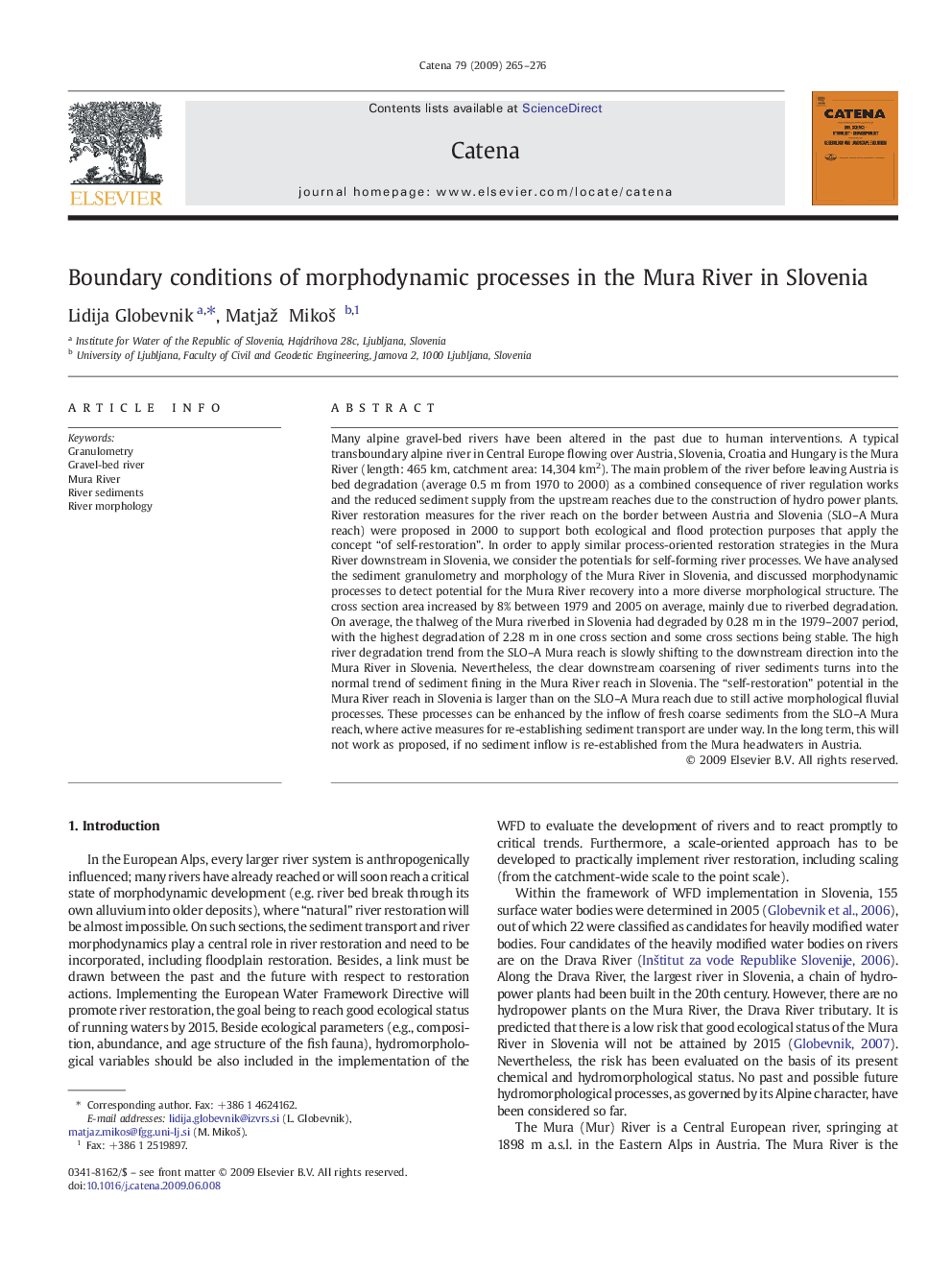| کد مقاله | کد نشریه | سال انتشار | مقاله انگلیسی | نسخه تمام متن |
|---|---|---|---|---|
| 4572287 | 1332165 | 2009 | 12 صفحه PDF | دانلود رایگان |

Many alpine gravel-bed rivers have been altered in the past due to human interventions. A typical transboundary alpine river in Central Europe flowing over Austria, Slovenia, Croatia and Hungary is the Mura River (length: 465 km, catchment area: 14,304 km2). The main problem of the river before leaving Austria is bed degradation (average 0.5 m from 1970 to 2000) as a combined consequence of river regulation works and the reduced sediment supply from the upstream reaches due to the construction of hydro power plants. River restoration measures for the river reach on the border between Austria and Slovenia (SLO–A Mura reach) were proposed in 2000 to support both ecological and flood protection purposes that apply the concept “of self-restoration”. In order to apply similar process-oriented restoration strategies in the Mura River downstream in Slovenia, we consider the potentials for self-forming river processes. We have analysed the sediment granulometry and morphology of the Mura River in Slovenia, and discussed morphodynamic processes to detect potential for the Mura River recovery into a more diverse morphological structure. The cross section area increased by 8% between 1979 and 2005 on average, mainly due to riverbed degradation. On average, the thalweg of the Mura riverbed in Slovenia had degraded by 0.28 m in the 1979–2007 period, with the highest degradation of 2.28 m in one cross section and some cross sections being stable. The high river degradation trend from the SLO–A Mura reach is slowly shifting to the downstream direction into the Mura River in Slovenia. Nevertheless, the clear downstream coarsening of river sediments turns into the normal trend of sediment fining in the Mura River reach in Slovenia. The “self-restoration” potential in the Mura River reach in Slovenia is larger than on the SLO–A Mura reach due to still active morphological fluvial processes. These processes can be enhanced by the inflow of fresh coarse sediments from the SLO–A Mura reach, where active measures for re-establishing sediment transport are under way. In the long term, this will not work as proposed, if no sediment inflow is re-established from the Mura headwaters in Austria.
Journal: CATENA - Volume 79, Issue 3, 15 December 2009, Pages 265–276